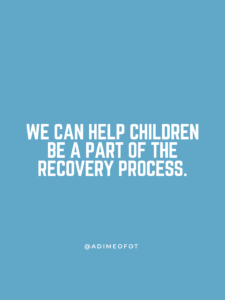An old saying refers that “children are resilient” or that kids will bounce back. I’m not quite sure this is true, especially with pediatric disaster recovery.
When it comes to adverse child experiences, there is “tolerable” stress and toxic stress. One of the key differences is having the support of a loving and present caregiver. Families with resources may see a natural disaster as tolerable. But for vulnerable populations with existing stressors and barriers this may not be the case.
Occupational Disruption
Natural disasters can unexpectedly impact the lives of families and their children, adding trauma and stress to their well-being. These disasters cause disruptions that can have traumatic effects on the co-occupations of families, the caregiver’s role of providing comfort, basic needs, and social interaction, and the occupations of their children (AOTA, 2020).
Environmental Racism and Its Impact
Families and communities in low-resource areas, also known as areas that have been systemically targeted and redlined with structural racism and environmental barriers, have a more difficult time with recovering from a natural disaster. Financially, there is a generational wealth gap between white families and families of color. Environmentally, cities have zoned areas through racial segregation. Forcing black residents into crowded areas with decreased access to green areas and food options is not a new occurrence.
“In a phenomenon called the “urban island heat effect”, these historically-redlined districts also now contain some of the hottest areas in the country, exacerbating heat- and carbon-related morbidity and mortality.” (Source)
Where OTs Fit In
Occupational therapists can assist with pediatric disaster recovery by assisting with restoring family routines. We can also help children to be a part of the recovery process. Past organizations have used art projects and group activities to heal from disaster related trauma. Areas where we can support include coping skills, self-regulation, community and school participation, as well as social participation.
Finally, we can be involved in ensuring a strong start for children and adolescents by being a part of climate change advocacy while hearing from diverse communities, and promoting disaster preparation for all families, including families with disabled children to have an emergency action plan.
To learn more, check out my recent article through the American Journal of Occupational Therapy, “The Opportunity of Occupational Therapy in Pediatric Disaster Recovery“. Please feel free to click here, or email me directly for access if you do not have a membership.


Reference:
American Occupational Therapy Association. (2020). Occupational therapy practice framework: Domain and process (4th ed.) American Journal of Occupational Therapy, 74(Suppl. 2). https://doi.org/10.5014/ajot.2020.74S2001